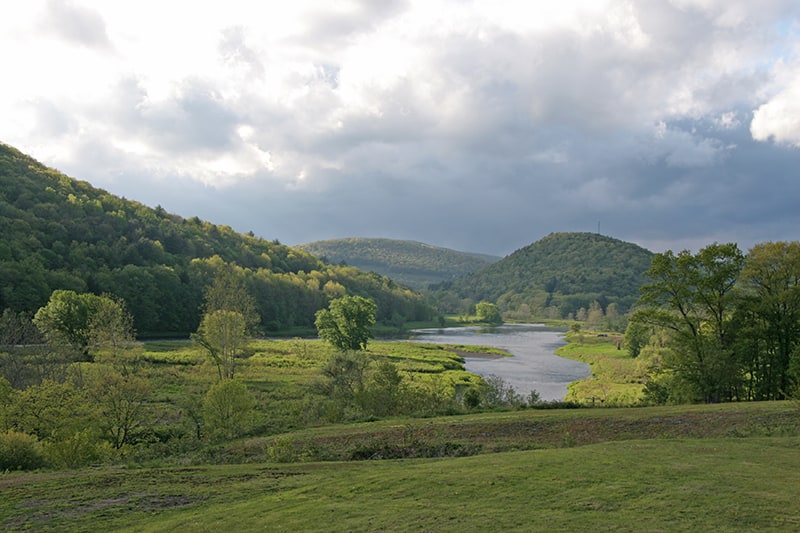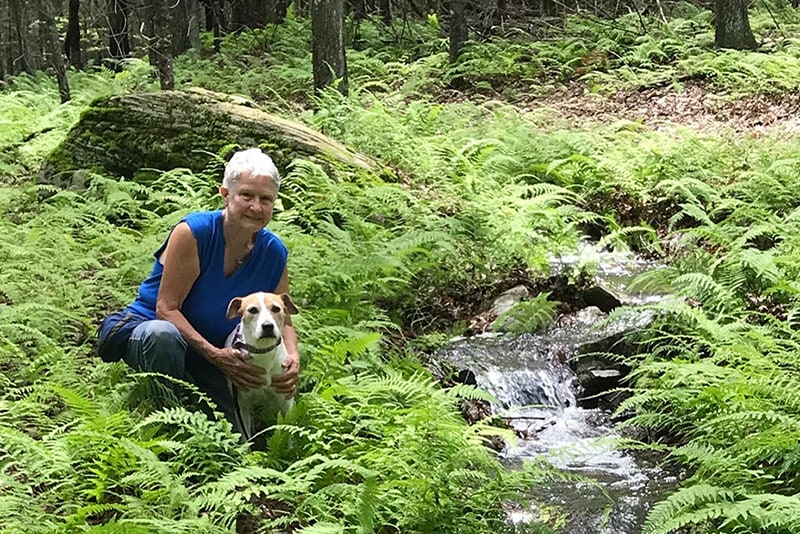What's New

September 14, 2023
Conservancy Responds to Timber Theft on Protected Property
As a nationally accredited land trust, the Delaware Highlands Conservancy’s primary responsibility is to ensure that the terms of its conservation easements, set forth to permanently protect each property’s unique conservation values, are being upheld. Through required annual property visits, frequent communication with landowners, and diligent recordkeeping, the Conservancy strives to reduce instances that have adverse effects on the protection of these properties. Occasionally, incidents do occur and the Conservancy is obligated to take legal action.
During a walk on her property in April 2019, Helen Beichel, a landowner of a conserved property in Sullivan County, New York, discovered that a logger had crossed her well-marked property boundary, illegally cut down and removed 120 sawtimber-grade trees, and destroyed a memorial site dedicated to the original property owner and donor of the conservation easement, Tom Raleigh. The trees cut were primarily mature white oaks—not only the most valuable trees on the site, but also the most ecologically important for production of the food supply critical for wildlife habitat. In addition, the logger created roads across the property traversing wetlands and vernal pools and left mud-filled ruts across steep slopes, endangering the high-quality stream located nearby.
“I nearly fainted when I saw what had happened to my forest. How could good neighbors do this? When I saw they had utterly destroyed Tom’s memorial, I cried,” said Ms. Beichel. “If people are planning to do a logging job on their land, consult with a forester to do it sustainably. The forester will pay for themselves by making sure you are paid properly for your trees, property lines are respected, as well as making sure your forest will recover.”
Since this discovery was made, the Delaware Highlands Conservancy has worked in partnership with the landowner, the New York State Department of Environmental Conservation, and legal counsel for restitution. In 2023, a settlement was reached between the Conservancy, the landowner, and the defendants in this case to provide remediation and restoration of the trees that were removed and to repay the Conservancy’s legal expenses in defense of this conservation easement.
“We are pleased to have brought this to conclusion,” stated Conservancy Executive Director Diane Rosencrance. “Though the timber theft caused significant damage to the property, the landowner and the Conservancy remain committed to restoring the forest that was impacted and ensuring that it is protected for future generations.”
The Conservancy was first contacted about this special Sullivan County property in the mid-1990s by the original landowner, who wanted to permanently protect his cherished land for future generations. Although Mr. Raleigh passed away before he could conserve his land, his niece honored his wishes after she inherited the property and donated the land to the Conservancy in 2009. She also installed the memorial site that was destroyed during the timber theft, intended as a lasting tribute to the man who recognized the need to preserve this valuable woodland.
In accordance with the donor’s wishes, the Conservancy then sold the property, protected with a conservation easement, to a conservation-minded buyer, Ms. Beichel, in 2012. Since then, Ms. Beichel has diligently cared for the property, including working with several natural resource professionals in an effort to enhance, further protect, and support a healthy and productive forested ecosystem.
Like the memorial site, the conservation easement also represents the original donor’s testament and legacy, which Ms. Beichel is honored to preserve and respect.
As a nationally accredited land trust, the Conservancy is able to insure its easements through Terrafirma Risk Retention Group, which helps to cover the costs of any necessary legal defense. The Delaware Highlands Conservancy remains committed to stewarding and defending all of our conservation easements and ensuring that the conservation values are upheld, forever.





